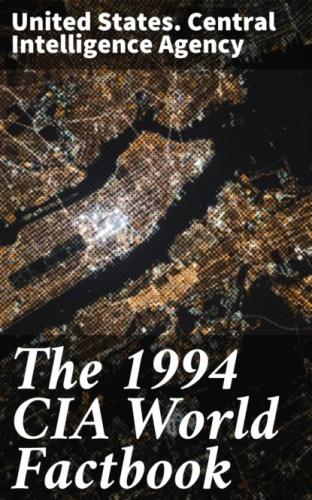Terrain:
mostly rugged mountains; plains in north and southwest
Natural resources:
natural gas, petroleum, coal, copper, talc, barites, sulphur, lead,
zinc, iron ore, salt, precious and semiprecious stones
Land use:
arable land:
12%
permanent crops:
0%
meadows and pastures:
46%
forest and woodland:
3%
other:
39%
Irrigated land:
26,600 sq km (1989 est.)
Environment:
current issues:
soil degradation; overgrazing; deforestation (much of the remaining
forests are being cut down for fuel and building materials);
desertification
natural hazards:
damaging earthquakes occur in Hindu Kush mountains (one measured 6.8
on the Richter scale in 1991); flooding
international agreements:
party to - Endangered Species, Environmental Modification, Marine
Dumping, Nuclear Test Ban; signed, but not ratified - Biodiversity,
Climate Change, Hazardous Wastes, Law of the Sea, Marine Life
Conservation
Note:
landlocked
@Afghanistan, People
Population:
16,903,400 (July 1994 est.)
Population growth rate:
2.45% (1994 est.)
Birth rate:
43.46 births/1,000 population (1994 est.)
Death rate:
18.94 deaths/1,000 population (1994 est.)
Net migration rate:
0 migrant(s)/1,000 population (1994 est.)
Infant mortality rate:
155.8 deaths/1,000 live births (1994 est.)
Life expectancy at birth:
total population:
44.89 years
male:
45.53 years
female:
44.21 years (1994 est.)
Total fertility rate:
6.27 children born/woman (1994 est.)
Nationality:
noun:
Afghan(s)
adjective:
Afghan
Ethnic divisions:
Pashtun 38%, Tajik 25%, Uzbek 6%, Hazara 19%, minor ethnic groups
(Chahar Aimaks, Turkmen, Baloch, and others)
Religions:
Sunni Muslim 84%, Shi'a Muslim 15%, other 1%
Languages:
Pashtu 35%, Afghan Persian (Dari) 50%, Turkic languages (primarily
Uzbek and Turkmen) 11%, 30 minor languages (primarily Balochi and
Pashai) 4%, much bilingualism
Literacy:
age 15 and over can read and write (1990 est.)
total population:
29%
male:
44%
female:
14%
Labor force:
4.98 million
by occupation:
agriculture and animal husbandry 67.8%, industry 10.2%, construction
6.3%, commerce 5.0%, services and other 10.7% (1980 est.)
@Afghanistan, Government
Names: conventional long form: Islamic State of Afghanistan conventional short form: Afghanistan local long form: Dowlat-e Eslami-ye Afghanestan local short form: Afghanestan former: Republic of Afghanistan Digraph: AF Type: transitional government Capital: Kabul Administrative divisions: 30 provinces (velayat, singular - velayat); Badakhshan, Badghis, Baghlan, Balkh, Bamian, Farah, Faryab, Ghazni, Ghowr, Helmand, Herat, Jowzjan, Kabol, Kandahar, Kapisa, Konar, Kondoz, Laghman, Lowgar, Nangarhar, Nimruz, Oruzgan, Paktia, Paktika, Parvan, Samangan, Sar-e Pol, Takhar, Vardak, Zabol note: there may be a new province of Nurestan (Nuristan) Independence: 19 August 1919 (from UK) National holiday: Victory of the Muslim Nation, 28 April; Remembrance Day for Martyrs and Disabled, 4 May; Independence Day, 19 August Constitution: none Legal system: a new legal system has not been adopted but the transitional government has declared it will follow Islamic law (Shari'a) Suffrage: undetermined; previously universal, male ages 15–50 Executive branch: chief of state: President Burhanuddin RABBANI (Interim President July - December 1992; President since 2 January 1993); First Vice President Mohammad NABI Mohammadi (since NA); First Vice President Mohammad SHAH Fazli (since NA); election last held NA December 1992 (next to be held NA December 1994); results - Burhanuddin RABBANI was elected to a two-year term by a national shura, later amended by multi-party agreement to 18 months. head of government: Prime Minister Gulbuddin HIKMATYAR (since 17 March 1993); First Deputy Prime Minister Qutbuddin HELAL (since 17 March 1993); Deputy Prime Minister Arsala RAHMANI (since 17 March 1993) cabinet: Council of Ministers Legislative branch: a unicameral parliament consisting of 205 members was chosen by the shura in January 1993; non-functioning as of June 1993 Judicial branch: an interim Chief Justice of the Supreme Court has been appointed, but a new court system has not yet been organized Political parties and leaders: current political organizations include Jamiat-i-Islami (Islamic Society), Burhanuddin RABBANI, Ahmad Shah MASOOD; Hizbi Islami-Gulbuddin (Islamic Party), Gulbuddin HIKMATYAR faction; Hizbi Islami-Khalis (Islamic Party), Yunis KHALIS faction; Ittihad-i-Islami Barai Azadi Afghanistan (Islamic Union for the Liberation of Afghanistan), Abdul Rasul SAYYAF; Harakat-Inqilab-i-Islami (Islamic Revolutionary Movement), Mohammad Nabi MOHAMMADI; Jabha-i-Najat-i-Milli Afghanistan (Afghanistan National Liberation Front), Sibghatullah MOJADDEDI; Mahaz-i-Milli-Islami (National Islamic Front), Sayed Ahamad GAILANI; Hizbi Wahdat (Islamic Unity Party), Abdul Ali MAZARI; Harakat-i-Islami (Islamic Movement), Mohammed Asif MOHSENI; Jumbesh-i-Milli Islami (National Islamic Movement), Rashid DOSTUM note: the former ruling Watan Party has been disbanded Other political or pressure groups: the former resistance commanders are the major power brokers in the countryside; shuras (councils) of commanders are now administering most cities outside Kabul; ulema (religious scholars); tribal elders Member of: AsDB, CP, ECO, ESCAP, FAO, G-77, IAEA, IBRD, ICAO, IDA, IDB, IFAD, IFC, ILO, IMF, INTELSAT, IOC, ITU, LORCS, NAM, OIC, UN, UNCTAD, UNESCO, UNIDO, UPU, WFTU, WHO, WMO, WTO Diplomatic representation in US: chief of mission: (vacant); Charge d'Affaires Abdul RAHIM chancery: 2341 Wyoming Avenue NW, Washington, DC 20008 telephone: (202) 234–3770 or 3771 FAX: (202) 328–3516 US diplomatic representation: none; embassy was closed in January 1989 Flag: three equal horizontal bands of green (top), white, and black, with the national coat of arms superimposed in the middle of the white band and large Islamic lettering superimposed over the green and white bands Overview: Afghanistan is an extremely poor, landlocked country, highly dependent on farming (wheat especially) and livestock raising (sheep and goats). Economic considerations have played second fiddle to political and military upheavals during more than 14 years of war, including the nearly 10-year Soviet military occupation (which ended 15 February 1989). Over the past decade, one-third of the population fled the country, with
